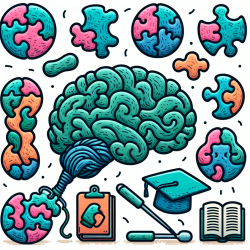Understanding Autism: The Role of Critical Periods in Brain Development
Autism Spectrum Disorder (ASD) is a complex neurodevelopmental condition that affects social interaction, communication, and behavior. Recent research suggests that disruptions during critical periods of brain development may play a significant role in the manifestation of autism symptoms. This blog explores these findings and their implications for practitioners working with individuals on the autism spectrum.
What Are Critical Periods?
Critical periods are specific windows of time during early postnatal development when the brain is particularly malleable and capable of being shaped by environmental experiences. During these periods, neural circuits are refined, and the balance between excitatory and inhibitory neurotransmission is crucial for normal brain development. This process allows for the development of sensory, language, and social skills.
The Link Between Critical Periods and Autism
Research indicates that an imbalance in excitatory and inhibitory (E/I) neurotransmission during critical periods may contribute to the development of autism. This imbalance can result from genetic or environmental factors that disrupt the normal timing and expression of critical period plasticity. Consequently, the refinement of neural circuits is impaired, potentially leading to the cognitive and behavioral symptoms associated with autism.
Implications for Practitioners
For practitioners working with individuals with autism, understanding the role of critical periods can inform therapeutic approaches. Here are some strategies to consider:
- Early Intervention: Since critical periods occur early in development, early intervention is crucial. Programs that focus on enhancing sensory processing and social skills can help mitigate the effects of disrupted critical periods.
- Tailored Therapies: Recognizing the heterogeneity of autism, therapies should be personalized to address the specific sensory and cognitive needs of each individual.
- Research and Collaboration: Practitioners are encouraged to stay informed about the latest research on critical periods and autism. Collaborating with researchers can lead to the development of innovative therapeutic interventions.
Encouraging Further Research
The exploration of critical periods in autism is still in its early stages. Continued research is essential to fully understand the mechanisms underlying E/I imbalance and its impact on brain development. Practitioners can contribute to this field by documenting their observations and outcomes, which can provide valuable insights for future studies.
To read the original research paper, please follow this link: Autism: A “Critical Period” Disorder?










